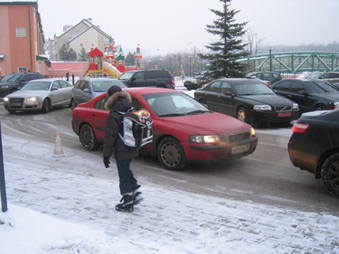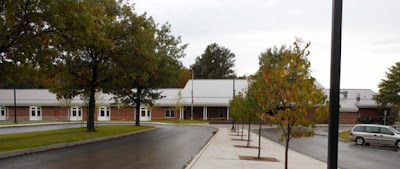Digital Crayon: Article 4 – School Traffic and Safety
Our last article was about growth and community. Another big issue with virtually all schools we work with is on-site traffic congestion and safety. Everybody is driving their kids to schools these days. This results in backups and delays, both on and off the school grounds. Because of this, people park everywhere and kids cross through travel lanes, between cars – it’s a wonder accidents don’t happen more often.  There are many design strategies that can be employed to mitigate the problems, but often there are just too many cars. We often gently suggest what’s known as “demand side management” which is an effort to reduce car usage with techniques such as improved bus service, incentives, sidewalks, bike racks and/or carpooling. This is often met with resistance, especially in international schools where safety is a big concern. People like to drive their cars! In addition to physical improvements, there are a few things that can be done operationally that we have seen help. One is having helpers available to help small kids exit and enter their car so that the driver does not to have to get out. This seems to speed up the pickup and delivery process. One school we work with even calls out the students names so they are ready when the car arrives. In the end, the key to decreasing congestion is improving flow.
There are many design strategies that can be employed to mitigate the problems, but often there are just too many cars. We often gently suggest what’s known as “demand side management” which is an effort to reduce car usage with techniques such as improved bus service, incentives, sidewalks, bike racks and/or carpooling. This is often met with resistance, especially in international schools where safety is a big concern. People like to drive their cars! In addition to physical improvements, there are a few things that can be done operationally that we have seen help. One is having helpers available to help small kids exit and enter their car so that the driver does not to have to get out. This seems to speed up the pickup and delivery process. One school we work with even calls out the students names so they are ready when the car arrives. In the end, the key to decreasing congestion is improving flow.  One of the key concerns, and rightly so, is safety. This can be improved by separating bus and parent drop-off areas. If there is not enough space for this and students must cross a travelled way, it should be only at well-marked designated areas. To ensure this happens, we often have to create barriers between parking areas and travel lanes to guide pedestrians to the safe crossings. We try to do this with landscaping when we can, but sometimes a nice looking fence will have to do!
One of the key concerns, and rightly so, is safety. This can be improved by separating bus and parent drop-off areas. If there is not enough space for this and students must cross a travelled way, it should be only at well-marked designated areas. To ensure this happens, we often have to create barriers between parking areas and travel lanes to guide pedestrians to the safe crossings. We try to do this with landscaping when we can, but sometimes a nice looking fence will have to do!